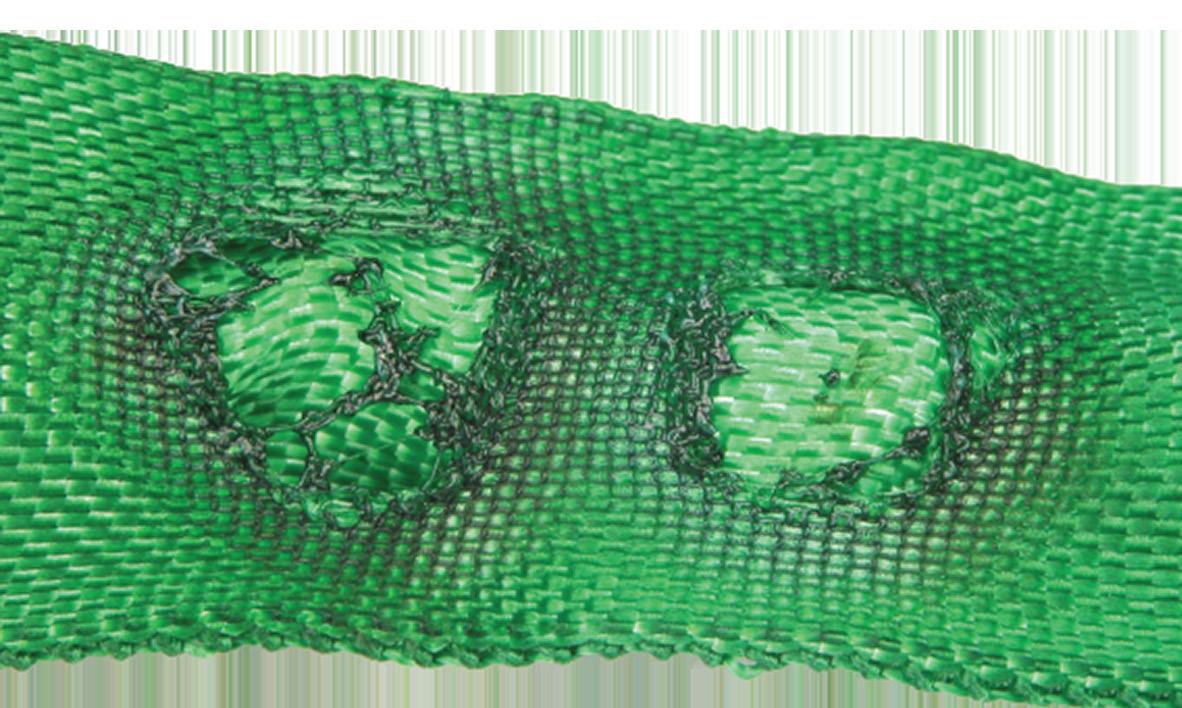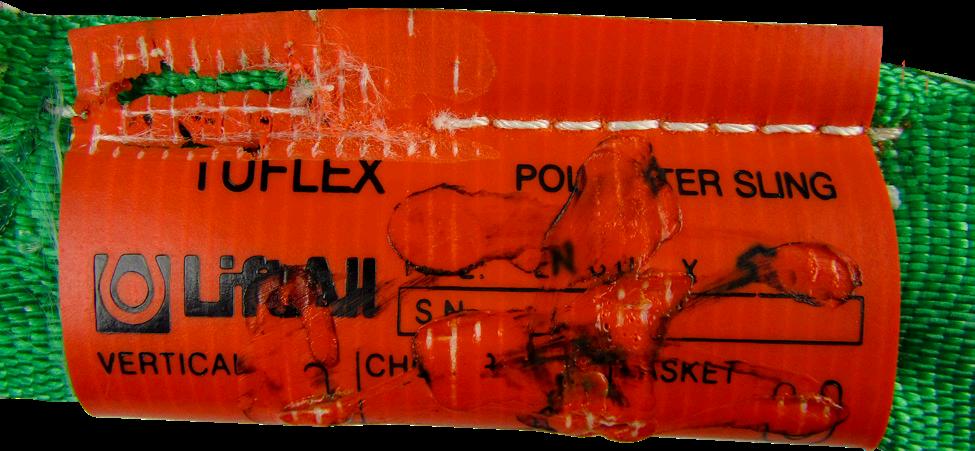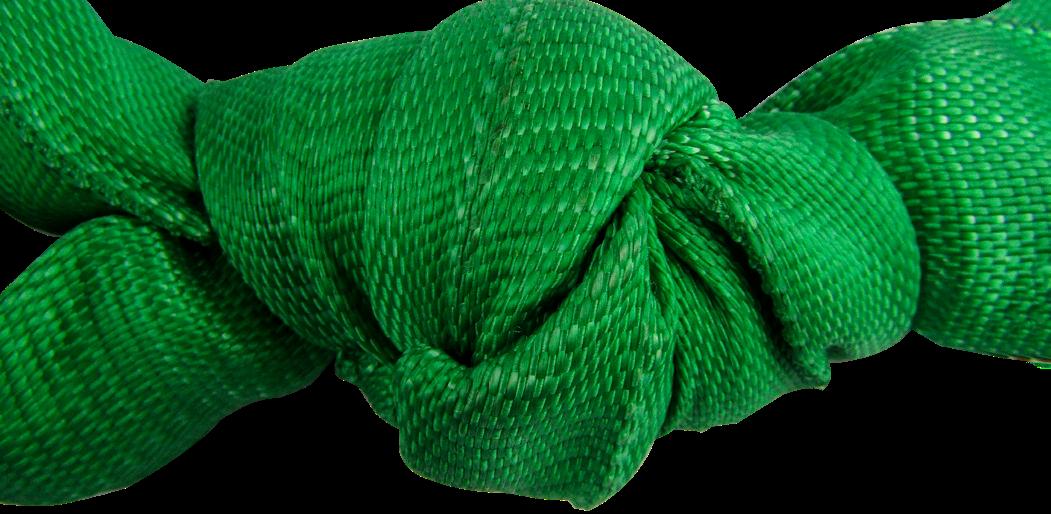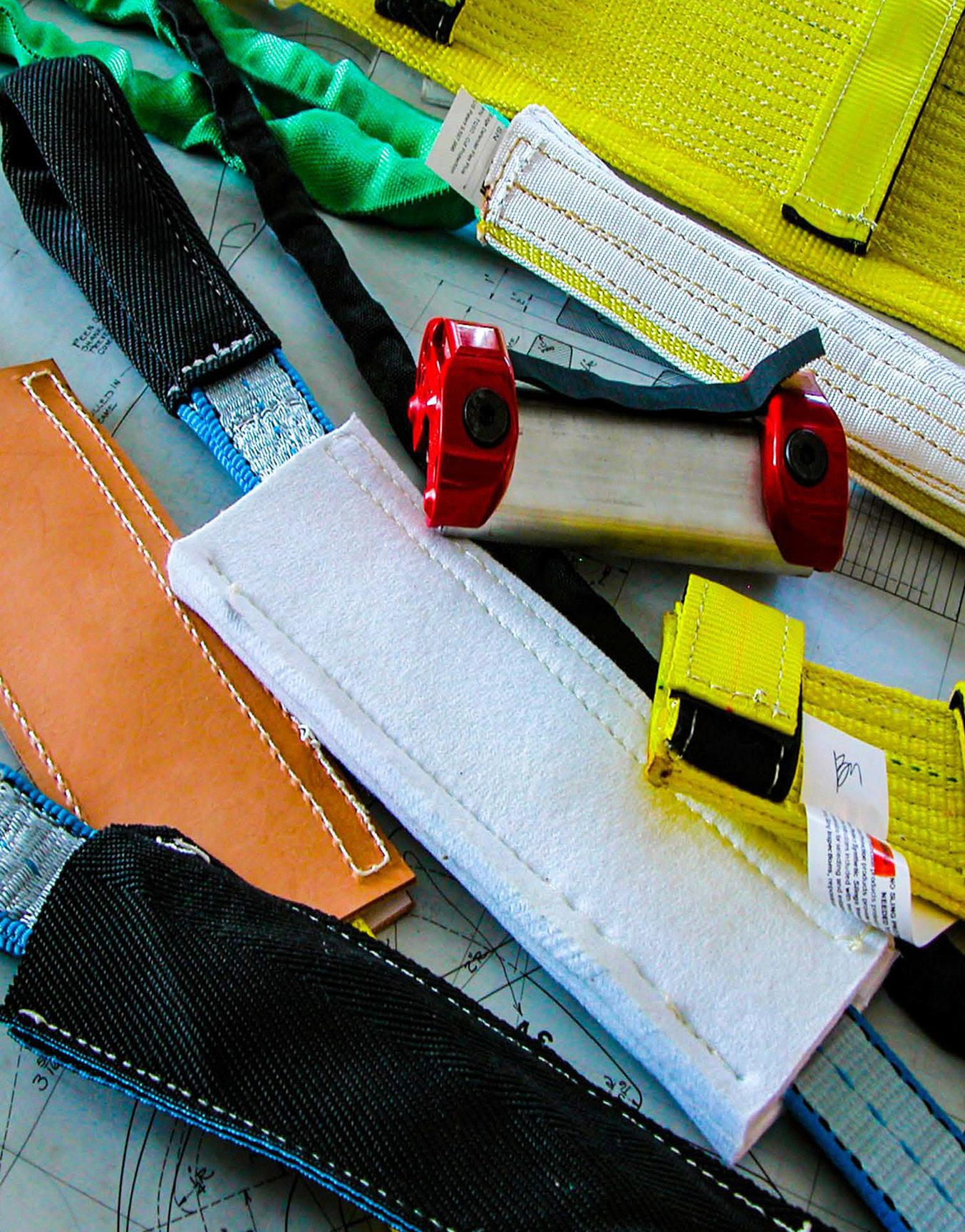
1 minute read
ROUNDSLING INSPECTION CRITERIA
from 2024 Catalog
by Lift-All
HEAT / CHEMICAL DAMAGE
WHAT TO LOOK FOR: Melted or charred fibers anywhere along the sling. Heat and chemical damage look similar and can damage sling fibers, compromising the sling's strength. Look for discoloration and/or fibers that have been fused together and may feel hard or crunchy. Slings showing heat or chemical damage must be removed from service.
Advertisement
TO PREVENT: Never use Tuf l ex ® roundslings where they can be exposed to temperatures in excess of 200°F, or around chemicals without confirming that the sling material is compatible with the chemicals being used. For elevated temperatures up to 350°F, use KeyFlex™ roundslings.
Illegible Or Missing Tags

WHAT TO LOOK FOR: The information provided on the sling tag is important for knowing what sling to use and how it will function. If you cannot find or read all of the information on a sling tag, the sling must be taken out of service.
TO PREVENT: Never set loads down on top of slings or pull slings from beneath loads if there is any resistance. Load edges should never contact sling tags during the lift. Avoid paint or chemical contact with tags.
Knots
WHAT TO LOOK FOR: Knots compromise the strength of slings by not allowing all fibers to contribute to the lift as designed. Knots are rather obvious problems as shown here.

TO PREVENT: Never tie knots in slings.
Cuts to the cover NOT exposing internal core yarns. The double-walled jacket protects the inner core yarns from damage. If the damage appears only to the outer jacket and does not expose the inner core yarns, the sling may remain in service (except chemical or heat damage). The sling may also be returned to Lift-All for inspection and repair to the jacket.
TO PREVENT: Use the appropriate sling protection between the sling and all edges that come in contact with the sling. See the Sling Protection section in this catalog.











